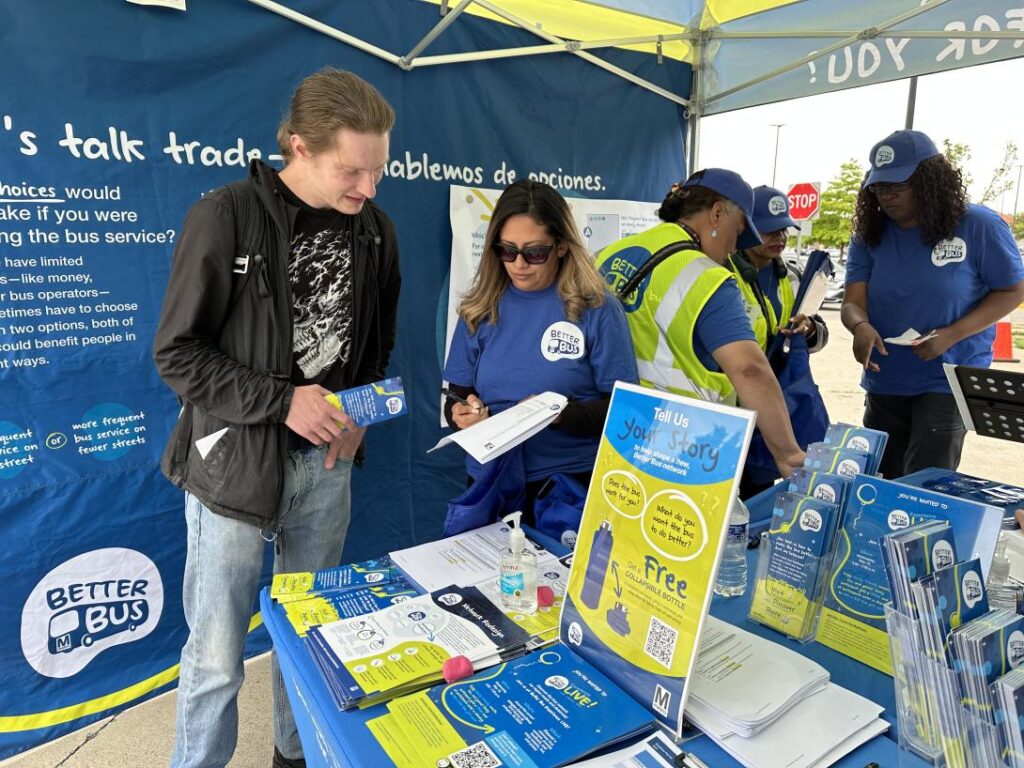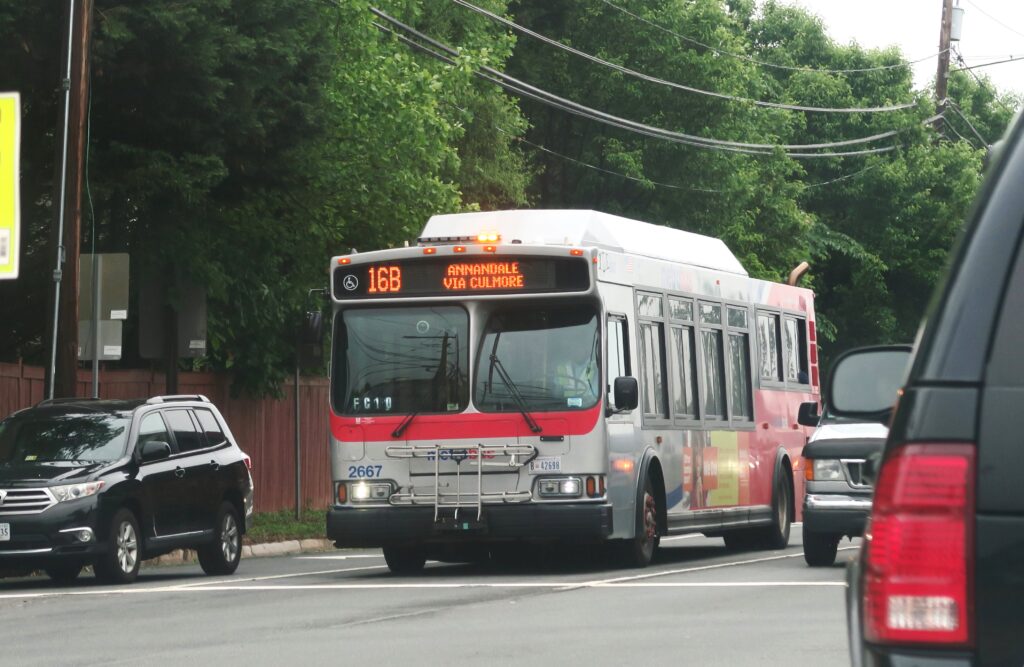Metro overhauls Metrobus network

Metro’s Board of Directors on Nov. 21 approved the Better Bus Network Redesign, the first major overhaul of the Metrobus network in its 50-year history.
The Better Bus project started in 2022 with the goal of making the bus system easier to use, faster, and more reliable.
All Metrobus routes in D.C., Maryland, and Virginia will be renamed, most routes will be changed, and 500 underused bus stops will be eliminated. The new bus network will take effect in June 2025.
Visit the Better Bus Network resource page to see the new maps and the status of bus routes and bus stops.
The following bus stops in the Annandale/Mason District area will be removed. The current routes are listed followed by the new route in parentheses:
- Little River Turnpike and Old Columbia Pike – 29G, 29K, 29N (F23, F24, F85)
- Little River Turnpike and High Place – 29G, 29K, 29N (F23, F24, F85)
- Little River Turnpike and John Marr Drive – 16A, 29G, 29K, 29N (F23, F24, F85)
- Little River Turnpike and Wedgewood Drive – 16A, 29G, 29K, 29N (F23, F24, F 44, F85)
- Columbia Pike and Bennett Drive – 16A, 26A (F26, F44)
- Columbia Pike and Oak Hill Drive – 16A, 26A (F26, F44)
- Columbia Pike and Oxford Street – 16A, 26A (F26, F44)
- Little River Turnpike and Pineland Street – 29K, 29N (F23, F24)
- Seminary Road and Gorham Street – 22F, 28F (F20)
- Jefferson Street and Leesburg Pike – 16H (A40)
- Carlin Springs Road and #3421 – 25B, 28A (A76, F20)
- Vista Drive and #6017 – 16C, 16E, 26A (A49, F26, F66)
- Leesburg Pike and Charles Street – 16C, 16E, 28A (A49, F20, F66)
- Glen Carlyn Drive and Glen Carlyn Drive – 16C, 16E, 26A (A49, F26, F66)
- Leesburg Pike and Peace Valley Lane –16C, 16E, 28A (A49, F20, F66)
- Columbia Pike and Spring Lane – 16A, 16C, 16E, 28A (F20, F26)
These bus stops will be retained:
- Columbia Pike and Barcroft View Terrace – 16A (F26, F44)
- Columbia Pike and Blair Road – 16A, 26A (F26, F44)
- Leesburg Pike and Leesburg Court – 16H, 22F, 25B (A76, F66)
- Leesburg Pike and Glen Carlyn Drive –16C, 16E, 28A (A49, F20, F66)
- Patrick Henry Drive and Willston Drive – 1A, 1B (A58)
- Willston Drive and Peyton Randolph Drive – 1A, 1B (A58)
- S. George Mason Drive –22F, 25B, 28F (A76)
One of the improvements Metro highlights is a new direct connection between the Seven Corners Transit Center and Farragut Square in D.C. via Washington Boulevard and Ballston. The new route (A58) would supersede routes 38B, 1A, and 1B.
A new route (F44) would coordinate service along Columbia Pike between Annandale and the Pentagon.
The new route A49 would consolidate the existing 16C, 16E, and 16Y routes and would have improved peak frequency on weekdays between Culmore and downtown D.C.

The current route 26A, between Northern Virginia Community College in Annandale to Seven Corners, would be replaced by F26. The new route will have new weekend service and service to 10 p.m. on weekdays.
Over the next seven months, Metro will educate the public on the changes, rewrite bus schedules, train bus operators on new routes, update bus stop signage, and change data feeds that serve the transit planning app and third-party directions apps, such as Google Maps and Transit.
Metro also plans to work with local transportation departments to install new bus stops and make other adjustments to street infrastructure where needed. Maps and other signage in rail stations and bus stops will be updated.
Transit planners started work on the Better Bus project two years ago by analyzing customer data to see how travel patterns have changed. They engaged local stakeholders and community advocates and interviewed bus drivers and riders.
Based on community input, Metro released two plans – a financially constrained network, which was adopted by the Metro board – and a Visionary Network that would increase frequencies and add more routes but cost 35 percent more than current resources. Metro wants to someday implement the Visionary Network but doesn’t currently have the funding to do so.


Fairfax routes are getting F’d.
They Did not think of the residents in Fairfax County especially Annandale who depend on bus transportation. Fairfax County Board of Supervisors now must pick up the slack or loose residents who cannot drive or do not wish to drive. This is a terrible decision by Metro.
Hopefully the one on Little River Turnpike in front of the Landmark Plaza and just before the exit for 395 North and South Street will be removed. It is an eyesore, it backs up traffic significantly, and it is breeding undesirable individuals who litter like crazy (have no alliance to the community). Metro is a disaster and probably run by a liberal with no business sense, only a focus on more bureaucracy!
They finally put up a bike rack at an Annandale stop near me. Unfortunately, it’s at LRT and John Marr, which is being eliminated. 🙄